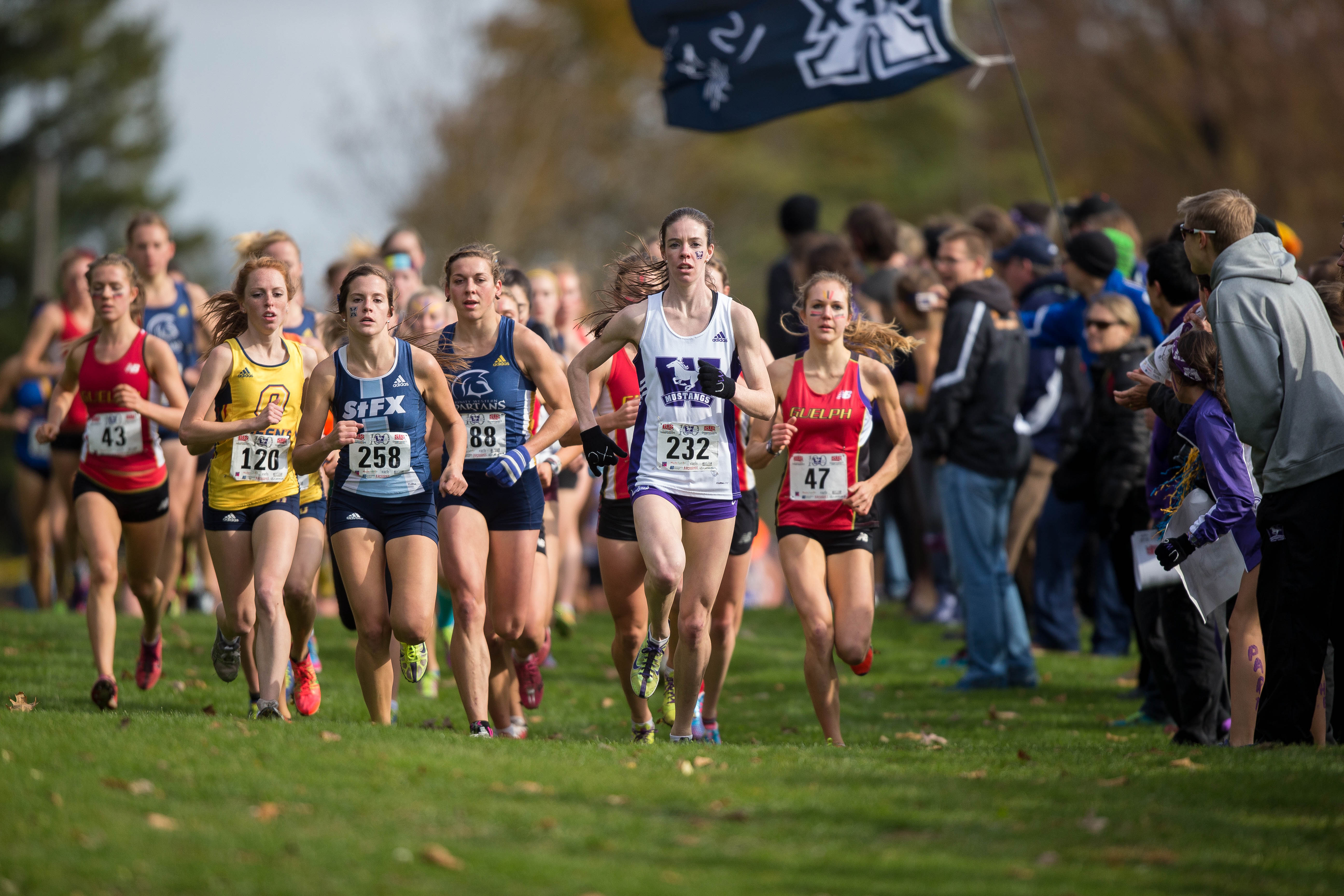Canadian university coaches gather to vote on whether or not we will see gender equity in cross-country


Canadian university coaches held a meeting on Friday to discuss a hot-button topic: whether or not university men and women will run equal distances at cross-country races in the future.
The arguments
Currently, the Canadian university cross-country championships are set up so that men race 10K and women run 6K. Critics of the status quo have argued that women racing a lesser distance is sexist, as women don’t run different distances at other running events.
It’s also argued that other high level races. including the IAAF senior cross-country championships, have moved away from different distances, making them the same for men and women. Former varsity runners have said that they feel that having women race 6K made it harder for them to move up to 10K, half-marathon or marathon distances after graduation – and to do so competitively.
That said, there are several coaches in Canada who disagree with the notion of changing the distances. It should be noted that these coaches are by no means new to the sport and many of whom have decades of experience in racing and in coaching. A common argument that has been voiced is that it’s not that they believe that female runners aren’t capable of running 10K, it’s that when they have been refined to run 6K at a high level, assigning them a longer distance would mean changing them into a different type of runner. Bumping them up to 10K, many coaches argued at last year’s meeting on the same subject, would be too big of a jump.

The current wording of the CIS cross-country race regulations:
The CIS Championship, for both men and women, shall take place on the same day at the same location. The length of the course for men shall be 10,000 meters +/-50 meters and shall be marked every l, 000 meters. The men’s course should be a maximum of four (4) laps (2.5 km per lap) to complete the course. The length of the course for women shall be 6,000 +/-25 meters and shall be marked every l,000 meters except on relatively small loop courses where minimal kilometer markings will suffice. The women’s course should be a maximum of three (3) laps to complete the course.
The proposals:
Time equity: This is the idea that the men and women would race for the same amount of time. The length of the course would take the athletes either 25 or 30 minutes to complete. That would mean that they would race for the same amount of time but not distance as female athletes (generally) cover less distance in the same amount of time as men. These times are based on the top ten athletes who would run in 25 minutes where the top half of the group would finish in 30. This motion was moved by Mark Bomba of Trinity Western University and seconded by Brent Fougner from Victoria.
Distance equity: This is the idea that the women’s race distance will be moved up to 8K for the 2017 and 2018 seasons. After that, the CIS would vote to equalize the distances for 2019 and either have the women move to 10K or the men move down to 8K. This motion was moved by Steve Boyd, the coach from Queen’s University and was seconded by Rich Lehman of Dalhousie.
How they voted
On distance equity
The coaches voted on Steve Boyd’s motion on moving towards distance equality and passed it 18-10 with one coach abstaining. Western Canada, Saskatchewan and Manitoba based coaches were not in favour. There was also resistance to this motion from a school in Quebec.
This means that, beginning in 2017, women will run 8K and men will remain at 10K. They will reconvene in 2019 to vote on whether or not they wish to fully equalize the men’s and women’s distances at to which distance (presumably either 8K or 10K for both). This is in line with Ontario’s university school championships (OUA), which have moved to 8K and 10K distances.
Interestingly, there was no debate or discussion before this vote.
On time equity
The recommendation that the CIS championships go a completely different direction towards a path of gender equity through an average distance based on time it takes for the top runners to complete a course was defeated. For some reason, even though the first distance motion was passed, the coaches voted on the issue. Bizarrely, even though this motion would have conflicted with the first motion, it was only narrowly defeated by a margin of 14-12 against.


